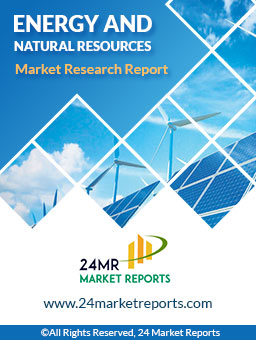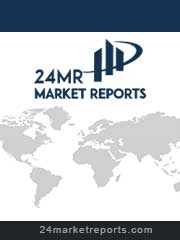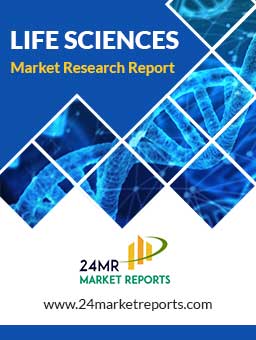
Download FREE Report Sample
Download Free sampleMARKET INSIGHTS
Global NMP Recovery System market size was valued at USD 120 million in 2024 and is projected to reach USD 266 million by 2032, exhibiting a CAGR of 12.4% during the forecast period. The Asia-Pacific region dominates the market with an 83% share, driven by rapid expansion in battery manufacturing facilities across China, Japan, and South Korea.
NMP Recovery Systems are specialized equipment designed to reclaim N-Methyl-2-pyrrolidone (NMP) solvent used in lithium-ion battery electrode manufacturing. These systems employ either rotor-based or chilled condensation technologies to recover up to 95% of the solvent, significantly reducing operational costs and environmental impact. The recovered NMP maintains high purity levels suitable for reuse in production processes.
The market growth is primarily fueled by the booming electric vehicle industry, where battery manufacturers face increasing pressure to optimize production costs and comply with stringent environmental regulations. Recent technological advancements have improved recovery rates to 98% in some systems, with key players like Mitsubishi Chemical introducing integrated solutions that combine recovery with solvent purification. The rotor recovery segment currently leads with 54% market share due to its higher efficiency in large-scale operations.
Rising Lithium-ion Battery Production to Accelerate NMP Recovery System Adoption
The global shift toward electric vehicles and renewable energy storage is driving unprecedented demand for lithium-ion batteries, which currently account for nearly 90% of NMP solvent consumption in manufacturing. With battery production projected to grow at 25% annually through 2030, manufacturers face increasing pressure to implement NMP recovery systems that can reduce operational costs by up to 40% while meeting stringent environmental regulations. The typical lithium-ion battery production line consumes approximately 300-500 tons of NMP annually, creating strong economic incentives for recovery solutions.
Stringent Environmental Regulations Creating Compliance Imperative
To know more about market statistics, Download a FREE Sample copy
Environmental agencies worldwide are tightening regulations on volatile organic compound (VOC) emissions, with NMP classified as a hazardous air pollutant in several jurisdictions. Recent standards now mandate 95%+ recovery rates for NMP in battery manufacturing. This regulatory push has transformed NMP recovery from an optional efficiency measure to an operational necessity, particularly in Europe where the Industrial Emissions Directive imposes strict emission limits. Manufacturers that fail to comply risk penalties exceeding $50,000 per violation, making recovery systems a critical operational investment.
➤ The U.S. EPA's National Emission Standards for Hazardous Air Pollutants (NESHAP) now requires NMP emission controls for battery manufacturing facilities exceeding 10 tons annual usage.
High Initial Capital Costs Create Adoption Barriers
While NMP recovery delivers long-term savings, the substantial upfront investment remains a significant barrier for small and mid-sized manufacturers. Complete recovery systems typically require $1-5 million depending on capacity, with payback periods ranging from 2-5 years. This capital intensity discourages adoption among price-sensitive operations, particularly in developing markets where regulatory enforcement remains inconsistent. Moreover, the need for customized engineering solutions adds complexity and cost, as each facility's NMP usage patterns and waste streams require tailored system designs.
Other Restraints
Technical Complexity of Recovery Operations
Maintaining optimal recovery efficiency presents ongoing operational challenges. System performance can degrade due to impurities in waste streams, requiring frequent maintenance and skilled technicians - a scarce resource in many markets. The typical recovery system loses 5-8% efficiency annually without proper upkeep, directly impacting operational economics.
Limited Awareness in Emerging Markets
Despite rapid battery industry growth in Southeast Asia, many manufacturers remain unaware of recovery system benefits beyond compliance. This knowledge gap slows adoption rates, with less than 30% of regional battery producers currently implementing comprehensive NMP recovery solutions.
Advanced Recovery Technologies Opening New Revenue Streams
The development of hybrid recovery systems combining adsorption, condensation, and membrane technologies presents significant growth opportunities. These next-generation solutions achieve recovery rates exceeding 98% while reducing energy consumption by up to 30% compared to conventional systems. Leading manufacturers are investing heavily in R&D, with recent breakthroughs including AI-powered monitoring systems that optimize recovery performance in real-time based on solvent purity analytics.
Meanwhile, the circular economy trend is creating new business models where recovery system providers offer NMP-as-a-service arrangements. These innovative contracts bundle equipment leasing with solvent reclamation services, lowering adoption barriers while creating recurring revenue streams. The service model is gaining particular traction in Europe, where it now represents nearly 20% of new system deployments.
Supply Chain Disruptions Impacting System Deployment Timelines
The NMP recovery system market faces mounting pressure from global supply chain constraints, particularly for specialized components like corrosion-resistant heat exchangers and high-efficiency compressors. Lead times for complete systems have extended from 6-8 months to 12-18 months in some cases, delaying critical compliance timelines for manufacturers. These bottlenecks are exacerbated by the concentration of key component suppliers in limited geographic markets.
Other Challenges
Skilled Labor Shortages
The specialized nature of recovery system installation and maintenance requires trained technicians that are in short supply globally. This skills gap is particularly acute in high-growth markets like India and Southeast Asia, where local training programs haven't kept pace with industry expansion.
Technology Standardization Issues
The lack of uniform performance standards across regions creates integration challenges for multinational manufacturers. Divergent regulatory requirements in different markets force costly system customizations, slowing deployment and increasing engineering complexity.
Rotor Recovery Type Dominates Due to Higher Efficiency in NMP Recycling
The market is segmented based on type into:
Chilled Recovery Type
Rotor Recovery Type
Lithium-ion Battery Segment Leads With Strong Demand From EV Manufacturing
The market is segmented based on application into:
Lithium-ion Battery
Chemical
Others
Battery Manufacturers Are Primary Adopters for Sustainability Compliance
The market is segmented based on end user into:
Battery Manufacturers
Chemical Plants
Recycling Facilities
Distillation Technology Most Prevalent for High-Purity NMP Recovery
The market is segmented based on technology into:
Distillation
Membrane Separation
Adsorption
Market Leaders Focus on Sustainability and Efficiency to Gain Competitive Edge
The NMP (N-Methyl-2-pyrrolidone) Recovery System market demonstrates a concentrated competitive landscape, with the top five players collectively holding approximately 62% market share in 2024. This dominance stems from their technological expertise in solvent recovery solutions and strong regional footholds in Asia-Pacific, which accounts for over 83% of global demand.
ShengHe and Mitsubishi Chemical emerge as frontrunners, leveraging their extensive experience in chemical processing and lithium-ion battery manufacturing infrastructure. These leaders continue to invest heavily in research to improve recovery rates beyond the industry standard of 85-95%, while simultaneously reducing energy consumption by up to 40% compared to conventional methods.
Meanwhile, Ousailai Technology and Zhongchuang Environmental Technology are making significant strides through strategic collaborations with battery manufacturers. Their customized NMP recovery solutions specifically address the stringent purity requirements (≥99.9%) needed for electrode slurry preparation in lithium-ion battery production.
The market also sees growing competition from emerging players like Pengjin Technology and Xiamen Tmax Machine, who are disrupting traditional models with compact, modular systems designed for small to medium-scale battery producers. These innovative approaches are particularly gaining traction in Southeast Asia's expanding battery manufacturing hubs.
ShengHe (China)
Mitsubishi Chemical (Japan)
Ousailai Technology (China)
Zhongchuang Environmental Technology (China)
Pengjin Technology (China)
Seibu Giken (Japan)
Taikisha (Japan)
Xiamen Tmax Machine (China)
Durr Megtec (Germany)
Aobo Environmental New Energy (Wuxi) (China)
The global NMP recovery system market is experiencing accelerated growth primarily due to the increasing adoption of sustainable manufacturing practices in lithium-ion battery production. With N-methyl-2-pyrrolidone (NMP) being an essential solvent in electrode manufacturing, recovering and reusing this high-value chemical has become economically and environmentally critical. Systems currently achieve recovery efficiencies exceeding 90%, reducing production costs by 30-40% while minimizing environmental impact. The Asia-Pacific region, accounting for 83% of global demand, continues to lead this trend as battery manufacturers seek compliance with stringent emission regulations.
Technological Advancements in Recovery Systems
Rotor recovery systems, holding 54% market share, dominate the industry due to their higher efficiency in NMP vapor condensation compared to chilled recovery alternatives. Recent innovations include IoT-enabled systems with real-time solvent purity monitoring and energy optimization algorithms that reduce operational costs by 15-20%. Mitsubishi Chemical and ShengHe have introduced hybrid recovery units combining adsorption and condensation technologies, achieving 95% solvent purity levels – a benchmark for reusable NMP in premium battery production lines.
Leading lithium-ion producers are increasingly investing in in-house NMP recovery capabilities to secure supply chains and reduce dependence on solvent suppliers. This trend is particularly pronounced among Tier-1 battery manufacturers, where captive recovery systems now handle 68% of internal NMP demand. The strategy not only mitigates price volatility risks but also aligns with ESG goals, as recycled NMP reduces hazardous waste generation by approximately 1.2 metric tons per GWh of battery production capacity. Market consolidation is accelerating as evidenced by three major acquisitions in this sector during 2023.
North America
The North American NMP recovery market, accounting for approximately 9% of global revenue, is primarily driven by strict environmental regulations and a well-established lithium-ion battery manufacturing sector. The U.S. leads regional adoption due to EPA mandates on solvent emissions and substantial EV industry growth, with major battery production facilities being established by companies like Tesla and Panasonic. Canada follows closely with initiatives like the Strategic Innovation Fund supporting clean technology adoption. While the market shows steady growth, high operational costs of recovery systems pose adoption challenges for smaller manufacturers. However, increasing focus on circular economy principles is creating favorable conditions.
Europe
Europe's 6% global market share reflects its commitment to sustainable manufacturing practices, particularly in the automotive and energy storage sectors. Germany dominates regional demand, with strict REACH regulations pushing manufacturers toward NMP recovery solutions as an alternative to expensive solvent disposal. The European Green Deal has accelerated adoption, with France and Nordic countries leading in implementation. However, the presence of alternative solvent technologies and mature recycling infrastructure has somewhat limited market penetration. Recent developments include partnerships between recovery system providers and automotive OEMs to establish closed-loop battery production systems across the region.
Asia-Pacific As the dominant market with 83% global share, Asia-Pacific's growth is propelled by China's booming battery manufacturing sector, which accounts for over 70% of global lithium-ion production. Government policies mandating solvent recovery and heavy investment in EV infrastructure drive rapid adoption. Japan and South Korea follow with technologically advanced recovery solutions, though at smaller scales. While price sensitivity remains a challenge in emerging Southeast Asian markets, increasing environmental awareness is prompting manufacturers to invest in recovery systems. Regional leaders like BYD and CATL are vertically integrating NMP recovery to enhance sustainability and reduce production costs.
South America
This emerging market shows gradual adoption, primarily in Brazil and Argentina where battery production is expanding to serve the growing automotive sector. Limited regulatory pressure and economic volatility have slowed widespread implementation, though multinational corporations are introducing recovery systems to align with global sustainability standards. The lithium mining boom in the Lithium Triangle countries presents long-term opportunities as local processing capabilities develop. Current challenges include lack of technical expertise and competing priorities in industrial development, but regional trade agreements may accelerate technology transfer in coming years.
Middle East & Africa
The region represents a nascent market with growth potential tied to diversification efforts away from oil dependence. The UAE and Saudi Arabia lead in adopting advanced manufacturing technologies, including NMP recovery systems for their developing battery and chemical sectors. However, limited local production currently restricts market size, with most systems imported for specific industrial applications. Africa shows sporadic adoption in South Africa and Morocco, where automotive investments are emerging. While environmental regulations remain underdeveloped, multinational corporations operating in the region are implementing recovery systems to maintain global operational standards.
This market research report offers a holistic overview of global and regional markets for the forecast period 2025–2032. It presents accurate and actionable insights based on a blend of primary and secondary research.
✅ Market Overview
Global and regional market size (historical & forecast)
Growth trends and value/volume projections
✅ Segmentation Analysis
By product type or category
By application or usage area
By end-user industry
✅ Regional Insights
North America, Europe, Asia-Pacific, Latin America, Middle East & Africa
Country-level data for key markets
✅ Competitive Landscape
Company profiles and market share analysis
Key strategies: M&A, partnerships, expansions
Product portfolio and pricing strategies
✅ Technology & Innovation
Emerging technologies and R&D trends
Automation, digitalization, sustainability initiatives
✅ Market Dynamics
Key drivers supporting market growth
Restraints and potential risk factors
Supply chain trends and challenges
✅ Opportunities & Recommendations
High-growth segments
Investment hotspots
Strategic suggestions for stakeholders
✅ Stakeholder Insights
Target audience includes manufacturers, suppliers, distributors, investors, regulators, and policymakers
-> Key players include ShengHe, Ousailai Technology, Zhongchuang Environmental Technology, Pengjin Technology, and Mitsubishi Chemical, collectively holding about 62% market share.
-> Growth is driven by rising demand for lithium-ion batteries, stringent environmental regulations, and energy efficiency requirements in manufacturing processes.
-> Asia-Pacific dominates with 83% market share, followed by North America (9%) and Europe (6%), primarily due to strong battery manufacturing presence in China and neighboring countries.
-> Emerging trends include advancements in rotor recovery technology, integration of IoT for system monitoring, and development of hybrid recovery solutions for improved efficiency.

Speak to our Custom Research Team and get the Custom Research in a budget
Custom ResearchFrequently Asked Questions ?
A license granted to one user. Rules or conditions might be applied for e.g. the use of electric files (PDFs) or printings, depending on product.
A license granted to multiple users.
A license granted to a single business site/establishment.
A license granted to all employees within organisation access to the product.
Upto Working 24 to 48 hrs
Upto 72 hrs max - Weekends and Public Holidays
Online Payments with PayPal and CCavenue
Wire Transfer/Bank Transfer
Hard Copy




 Industry Market Size
Industry Market Size SWOT Analysis
SWOT Analysis Industry Major Players
Industry Major Players Revenue Forecasts
Revenue Forecasts Historical and Forecast Growth
Historical and Forecast Growth Profitability Analysis
Profitability Analysis
























